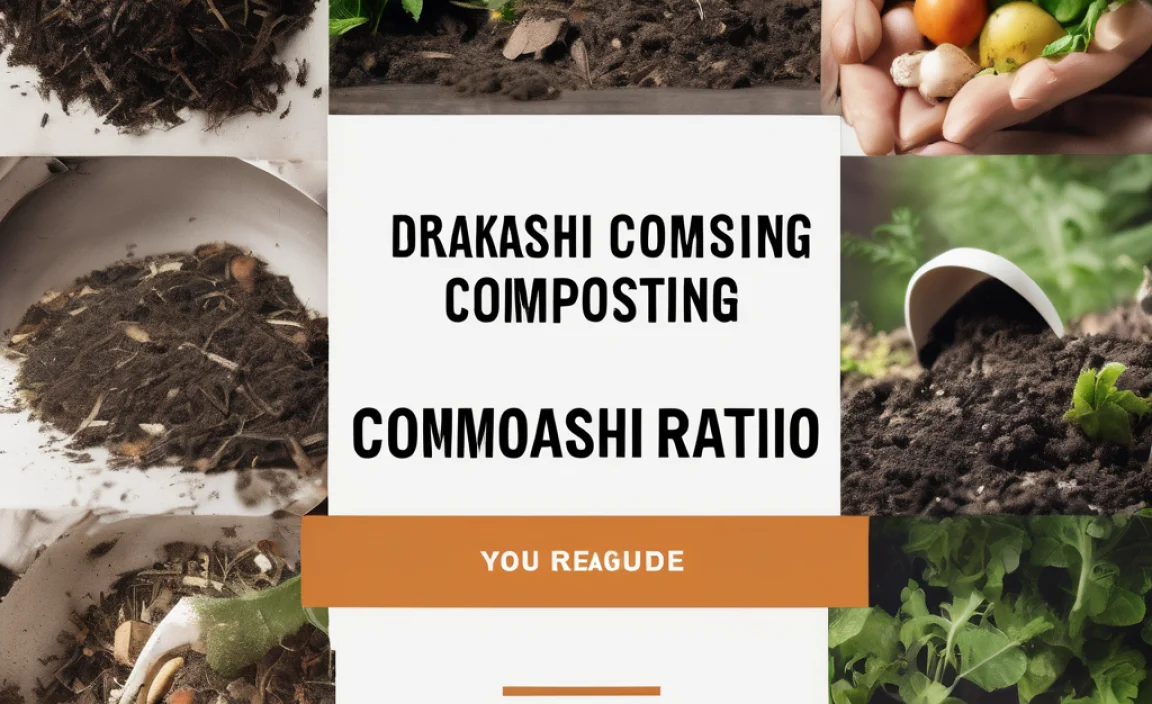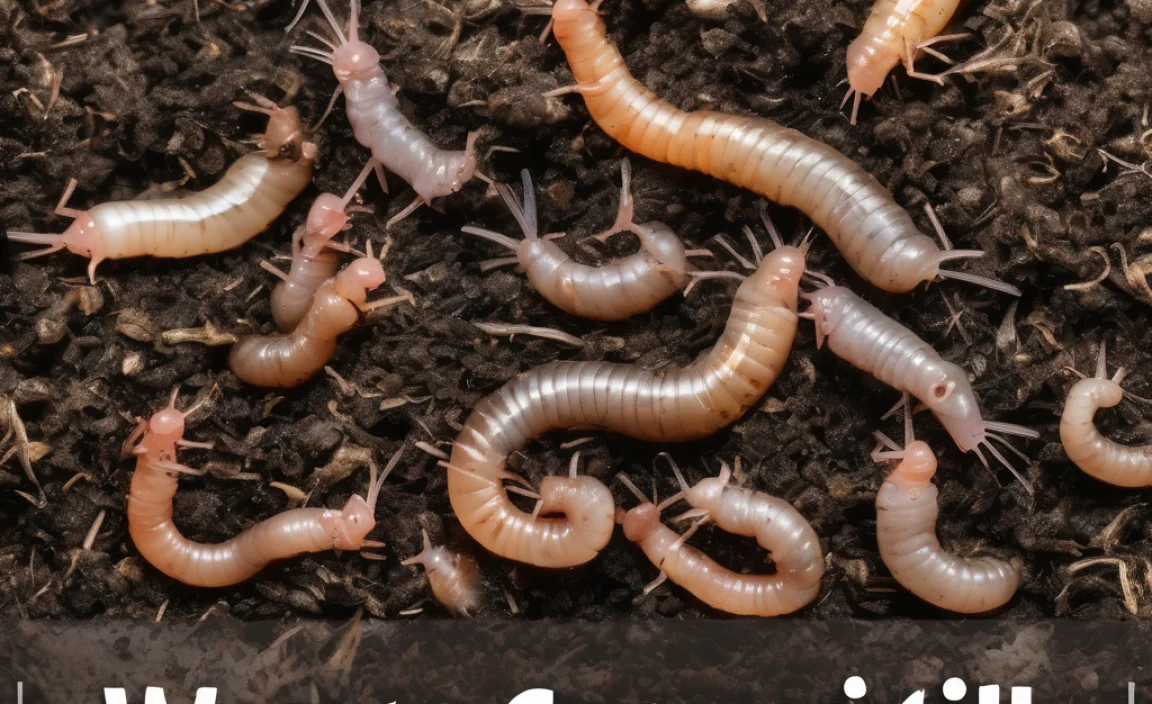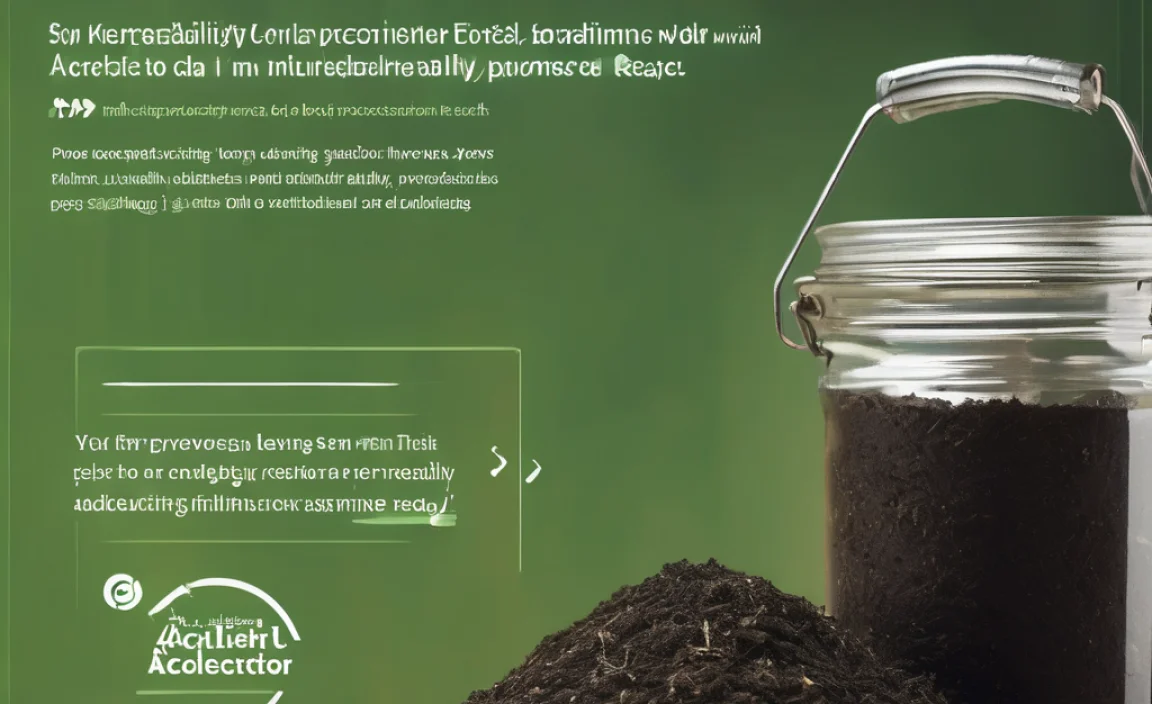Hey there, fellow home improvers! Troy D Harn here from TopChooser. Ever feel like getting your hands dirty with composting is more complicated than it needs to be? You’re not alone! It’s super rewarding to turn kitchen scraps and yard waste into black gold for your garden. But sometimes, things can go a little… smelly. Or slimy. Or just plain not work. Don’t worry, we’ve all been there! This guide is here to help you steer clear of those common compost pitfalls. We’ll walk through the top 5 backyard composting mistakes that can cause big headaches, and more importantly, how to easily avoid them. Get ready to compost like a pro!
Backyard Composting Mistakes: Avoid These 5 Dangers!
Composting is like magic for your garden. You take things that would otherwise be trash and turn them into nutrient-rich soil food. It’s fantastic for the environment and your plants. But, sometimes, that magic trick can go wrong. You might end up with a stinky pile, a bug-infested mess, or a heap that just won’t break down. The good news? Most of these problems come down to a few simple mistakes that are easy to fix or, even better, avoid from the start. Let’s dive into the 5 biggest dangers lurking in the backyard compost bin and how to dodge them!
Mistake 1: The “Green Overload” – Too Much Kitchen Scraps!
This is a super common one, especially when you’re just starting out and getting excited about diverting food waste. You start tossing every apple core, coffee ground, and leftover in the bin. While these “greens” are essential for composting, too much of a good thing can really throw your compost pile out of whack. When your compost bin is packed full of mostly green materials (which are moist and nitrogen-rich), it can become dense, wet, and start to smell pretty funky – like a rotten egg smell, yuck! This anaerobic (oxygen-starved) environment is a breeding ground for stinky bacteria instead of the good, aerobic ones that break down your materials efficiently.
Why “Greens” are Important (and how to use them right!)
Green materials are the fuel for your compost. They provide the nitrogen that microorganisms need to do their work. Think of things like:
- Fruit and vegetable scraps
- Coffee grounds and tea bags
- Grass clippings (in moderation!)
- Plant trimmings
The key is balance. Too many greens mean a soggy, smelly pile. Too few, and your compost will break down very slowly. The ideal ratio is often described as roughly 2 parts “browns” to 1 part “greens” by volume. This is where the next mistake often ties in!
How to Avoid the “Green Overload” Danger:
- Balance is Key: For every layer of green materials you add, add a thicker layer of brown materials. This will absorb excess moisture and help keep the pile aerated.
- Start Small: Don’t feel you need to add all your kitchen scraps at once. If you have a lot of greens, consider a small separate bin for them until you accumulate enough browns.
- Get “Browns” Ready: Keep a stockpile of carbon-rich “brown” materials handy. Think dried leaves, shredded newspaper, cardboard, or straw.
- Chop It Up: Smaller pieces of both greens and browns break down faster and help prevent dense, soggy clumps.
Mistake 2: The “Brown Drought” – Not Enough Carbon Material
On the flip side of the green-overload is the brown drought. You might be adding your kitchen scraps religiously, but if you’re not topping them up with enough carbon-rich “brown” materials, your compost pile will be in a holding pattern. Browns provide the energy source for the microbes and also add crucial air pockets to the compost pile. Without enough browns, decomposition slows to a crawl, and your pile might become too dense and still suffer from some of the same anaerobic issues as the green overload, though often with less immediate odor.
What are “Browns” and How Do They Help?
“Brown” materials are your fibrous, carbon-rich additions. They’re lighter, drier, and crucial for structure and airflow. Some great examples include:
- Dried leaves (a compost gold standard!)
- Shredded newspaper (avoid glossy pages)
- Shredded cardboard (remove tape and labels)
- Straw or hay
- Wood chips or sawdust (use sparingly, especially from treated wood)
- Pine needles
These materials don’t just add carbon; they create air pockets, preventing your compost from becoming a compacted, waterlogged mess. They are the yang to the greens’ yin!
How to Avoid the “Brown Drought” Danger:
- Stockpile Browns: This is probably the single best tip. In the fall, rake and bag extra leaves. Save cardboard boxes from deliveries. Keep a dedicated bin or corner for your brown materials.
- Layering Strategy: Think of building your compost like making a lasagna. Alternate layers of greens with generous layers of browns.
- Size Matters for Browns: Shredding or breaking down brown materials, like tearing cardboard or shredding newspaper, helps them break down more effectively and integrate better with the greens.
- Don’t Forget Shredded Browns for Greens: When you add your kitchen scraps (greens), immediately cover them with a layer of shredded browns. This keeps smells down and starts that essential balancing act.
Mistake 3: The “Water Woes” – Too Wet or Too Dry
Moisture is a critical ingredient for a healthy compost pile. The microorganisms that do the heavy lifting need water to survive and thrive. However, like many things in life, too much or too little can cause big problems. A compost pile that’s too wet can turn into a stinky, slimy mess, leading to anaerobic conditions and odors. On the other hand, a pile that’s too dry will barely decompose at all, as the microbial activity will grind to a halt. Imagine trying to bake a cake with no water – it just won’t happen!
The “Just Right” Moisture Level
The goal is for your compost pile to be as damp as a wrung-out sponge. You should be able to grab a handful of compost and squeeze it, and only a drop or two of water should come out. If water streams out, it’s too wet. If it crumbles apart and feels dusty, it’s too dry.
This moisture level is essential for the billions of tiny organisms doing the work of decomposition. They need moisture to move, consume, and multiply. Think of it as the perfect humidity for a thriving microbial ecosystem.
How to Avoid Moisture Mistakes:
If Your Compost is Too Wet (Likely from too many greens, heavy rain, or poor drainage):
- Add Browns: This is your first line of defense. Dry, carbon-rich materials like shredded newspaper, cardboard, or straw will absorb excess moisture.
- Turn Your Pile: Aerating the pile helps the excess moisture evaporate.
- Cover Your Pile: During prolonged rainy periods, a tarp or a lid can prevent your compost from becoming waterlogged. Make sure the cover allows some airflow, though.
- Improve Drainage: If you’re using a bin, ensure it has drainage holes. If it’s a simple pile, try to build it on well-drained ground.
If Your Compost is Too Dry (Likely from too many browns, hot/windy weather, or insufficient watering):
- Add Water: The simplest solution is to add water. Use a hose with a spray nozzle to gently moisten the pile, or use a watering can.
- Turn Your Pile While Watering: This helps distribute the moisture evenly throughout the pile.
- Add More Greens: Moist, nitrogen-rich materials like fresh grass clippings or fruit and vegetable scraps will add moisture as they start to break down.
- Cover Loosely: A light covering can help retain some moisture in very hot or windy conditions.
Mistake 4: The “Air Apparent” – Neglecting Aeration
Just like us, the beneficial microbes that break down our compostable materials need oxygen to breathe and do their job efficiently. This is where aeration comes in. If your compost pile becomes too compacted, or if you never turn it, air can’t reach the center of the pile. This leads to anaerobic conditions, which, as we’ve discussed, spells smelly compost and slow decomposition. It’s like holding your breath – not sustainable for long!
Why Airflow is Non-Negotiable
Aerobic decomposition (with oxygen) is much faster and produces compost that smells earthy and pleasant. Anaerobic decomposition (without oxygen) is slow, smelly, and can harbor pathogens. Good airflow also helps regulate the temperature of your compost, allowing it to heat up effectively to kill weed seeds and pathogens.
Turning your compost pile is the most effective way to introduce oxygen and mix materials. However, you can also create airflow by using materials that naturally create air pockets in your pile, like wood chips or straw.
How to Avoid the “Air Apparent” Danger:
- Turn Regularly: Aim to turn your compost pile with a pitchfork or compost aerator at least once every 1-2 weeks. This is especially important if you have a busy pile with frequent additions.
- Use an Aerator Tool: Compost aerator tools are specifically designed to poke holes into the pile and lift materials, introducing air with less effort than full turning.
- Layer with Air-Entraining Materials: Include materials like straw, dried leaves, or small amounts of wood chips in your layers. These create natural air pockets.
- Avoid Over-Compacting: Don’t stomp down on your compost materials or pack them too tightly. Let gravity do some of the work, but allow for space.
- Consider a Compost Tumbler: Tumblers are designed to be rotated, which aerates the contents automatically.
- “Lasagna” Layering: Building your pile in distinct layers, as mentioned for balancing greens and browns, also helps prevent excessive compaction.
Mistake 5: The “Wrong Stuff” – Adding Undesirable Items
This is a big one, folks! While many kitchen and yard scraps make fantastic compost, there are certain things you absolutely should NOT put into your backyard compost bin. Adding the wrong materials can lead to unpleasant odors, attract pests, introduce diseases to your garden soil, or simply never break down. It’s like trying to put diesel in a gasoline car – it’s just not going to run right!
What NOT to Compost (and why):
Understanding what to avoid is just as important as knowing what to add. Here’s a quick rundown of common culprits:
| Item | Reason to Avoid |
|---|---|
| Meat, fish, bones, and dairy products | Attract pests (rodents, flies), create strong odors, can harbor pathogens. |
| Oily or greasy foods | Slow down decomposition, coat other materials preventing airflow, attract pests. |
| Diseased plants or plants treated with pesticides/herbicides | Can spread diseases to your garden, or introduce unwanted chemicals into your soil. |
| Weeds that have gone to seed | The seeds might survive the composting process and sprout in your garden. |
| Pet waste (dog, cat feces) | Can contain harmful pathogens and parasites that may not be killed by typical home composting temperatures. (Manure from herbivores like rabbits or chickens is usually okay.) |
| Coal ash or charcoal briquettes | Can contain sulfur and heavy metals that are harmful to plants. Wood ash from untreated wood is generally okay in small amounts. |
| Glossy or coated paper/cardboard | May contain plastics or waxes that don’t break down or are bad for soil. |
| Human waste | Significant health risk due to pathogens. |
It’s also important to note that materials like black walnut leaves can be toxic to some plants due to a substance called juglone, so it’s best to err on the side of caution with those too.
How to Avoid the “Wrong Stuff” Danger:
- Know Your Greens and Browns: Familiarize yourself with what belongs in each category.
- When in Doubt, Leave It Out: If you’re unsure whether something can be composted, it’s safer for your compost pile and your garden to just put it in the trash or recycle it.
- Keep a “Don’t Compost” List Handy: Print out a list of items to avoid and keep it near your compost bin or kitchen trash.
- Compost Pet Waste Separately (if at all): Specialized composting systems exist for pet waste, but these are typically not mixed with garden compost and require higher temperatures. For backyard composting, it’s best to avoid it.
- Be Mindful of Yard Waste: Avoid composting plants that have had very aggressive pests or diseases, as they might transfer to your garden.
Other Common Composting Puzzles and How to Solve Them
While we covered the top 5 dangers, here are a few more quick tips to ensure your composting journey is smooth sailing:
Puzzle: My compost isn’t heating up.
Solution: Your pile might be too small, too dry, or lack sufficient “green” (nitrogen-rich) materials. Try adding more greens, moisten the pile, and turn it to introduce air. A pile needs to be at least 3x3x3 feet to generate enough heat.
Puzzle: I’m seeing lots of fruit flies or other annoying insects.
Solution: This is usually a sign of too many exposed food scraps (greens) or the pile being too moist. Bury fresh food scraps deep within the pile and always cover them with a layer of browns. If it’s too wet, add more browns and turn the pile.
Puzzle: It just smells bad!
Solution: A healthy compost pile should smell earthy, like a forest floor. A foul odor usually means it’s too wet and lacking oxygen (anaerobic). Add plenty of dry brown materials (leaves, shredded paper, cardboard) and turn your pile thoroughly to aerate it. Ensure good drainage.
Puzzle: My compost pile is attracting rodents or larger pests.
Solution: This is almost always due to adding meat, dairy, oily foods, or uncovered food scraps. Ensure you are strictly avoiding these items. Using a compost bin with a secure lid and walls can also help deter pests. Burying food scraps deep within the pile, always covered by browns, is crucial.
Quick Summary: Your Composting Cheat Sheet
Let’s boil down these tips into an easy-to-remember cheat sheet. Keep these points in mind, and you’ll be well on your way to composting success:
The Ideal Compost Mix
- Greens (Nitrogen-rich): Fruit & veg scraps, coffee grounds, grass clippings.
- Browns (Carbon-rich): Dried leaves, shredded paper/cardboard, straw.
- Ratio: Aim for roughly 2 parts browns to 1 part greens by volume.
Key Conditions for Success
- Moisture: Damp as a wrung-out sponge.
- Aeration: Turn your pile regularly or use aerator tools.
- Temperature: A hot pile (130-160°F) is ideal for faster decomposition and killing pathogens/seeds.
- Particle Size: Smaller pieces break down faster.
What to Absolutely Avoid
- Meat, dairy, oily foods
- Diseased plants or treated weeds
- Pet waste (from dogs/cats)
- Coal ash
Remember, composting is a process. It takes a little patience and observation, but by avoiding these common pitfalls, you’ll be well on your way to creating nutrient-rich compost for your garden. For more in-depth information on composting science and best practices, you can always refer to resources from your local Environmental Protection Agency (EPA) or university extension programs.
Frequently Asked Questions (FAQ) About Backyard Composting Mistakes
Q1: How do I know if my compost pile is working?
A: A healthy compost pile will shrink over time as materials break down. It should also generate some heat in the center (you can check with your hand or a compost thermometer) and smell earthy, not rotten. If it’s just sitting there with no change, something’s likely off.

I am passionate about home engineering. I specialize in designing, installing, and maintaining heating, ventilation, and air conditioning systems. My goal is to help people stay comfortable in their homes all year long.



